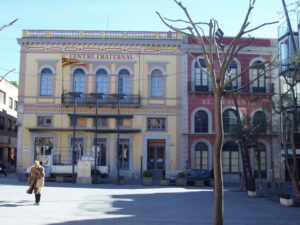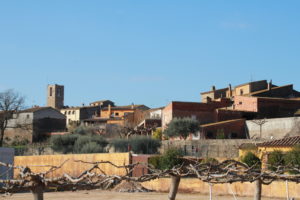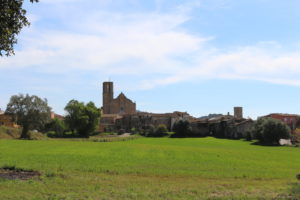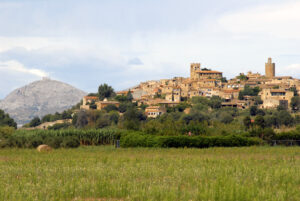Platja d’Aro (Castell-Platja d’Aro)
-
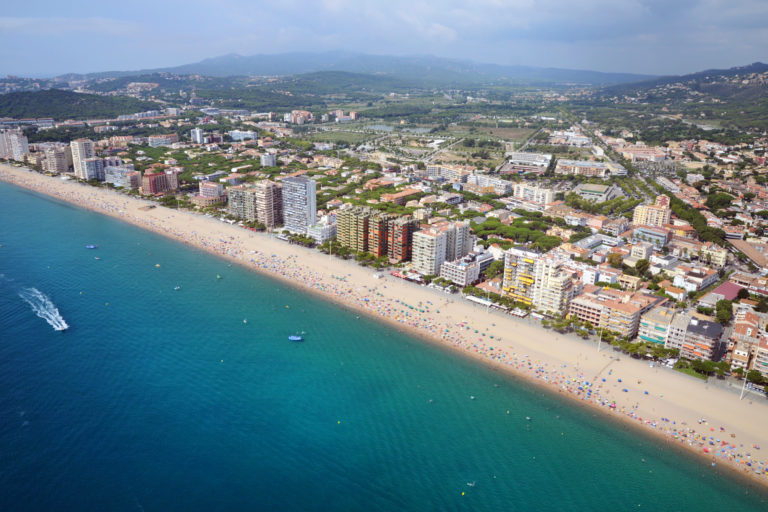
Photo: ©Lluís Català
Castell–Platja d’Aro is a municipality with nearly 11,000 inhabitants comprising three very different urban areas.
Castell d’Aro is the historical centre, 3 km from the beach. In this medieval location, you can visit the Castle of Benedormiens, which was built in 1041 and still features an old part from the 12th century. It is currently the municipality’s main exhibition site. The late-Gothic church of Santa Maria and a number of buildings from the 15th to the 18th centuries add beauty to this location in the Vall d’Aro, which has been classed as a Bé Cultural d’Interès Nacional. The former station for the train that ran from Sant Feliu de Guíxols to Girona and which is now known as the Narrow-Gauge Railway Greenway also deserves a special mention.
Platja d’Aro, which is regarded as a family tourist destination, has a large shopping area known for its varied daytime leisure offer and active nightlife 365 days of the year.
Platja Gran passes through all of Platja d’Aro, from Punta Prima-Port d’Aro as far as Punta d’en Ramis-Cavall Bernat. From here you can follow the camí de ronda coastal path to the north where you will find a series of small coves and beaches.
The Parc dels Estanys is a natural space with a central lagoon in the heart of the town where you can see flora, fauna and over 250 species of birds that live there or that stop over during their migrations. It also houses open-air exhibitions of large-scale sculptures.
The Roman village of Pla de Palol is a site dating from the first century BC. For eight centuries (1st century BC–7th century AD) this town dedicated itself to growing grapes and extracting clay which was exported from the natural harbour of Cala Rovira.
S’Agaró developed in the early 20th century. This development started to be built in the style of Catalan noucentisme, designed by the architect Rafael Masó Valentí promoted by Josep Ensesa Gubert. This exceptional urban complex is one of the clearest and best preserved expressions of the spirit of noucentismein Catalonia. The fabulous camí de ronda path that follows the coast from Platja del Racó to Platja de Sa Conca, the loggia in the style of Brunelleschi, the Senya Blanca gardens and the numerous noucentista style houses are living proof of this. In the centre of S’Agaró is the Church of Nostra Senyora de l’Esperança (1941–1943), which was designed by Rafael Masó and continued by Francesc Folguera. It is in the neo-baroque style albeit including original Gothic elements from the monastery of Sant Francesc in Girona, namely the arcades of the cloister, and it presides over this residential area which was declared a Bé Cultural d’Interès Nacional in 1995.
The municipality’s most notable activities are its Carnival, the Xalaro Family Festival, the Jazz Nights, the guided theatrical tours of the medieval market in Castell d’Aro, the beer festival, the living nativity of Castell d’Aro and a wide variety of sporting, cultural and leisure activities all through the year.
-
Dades de contacte:
Oficina de turisme de Castell Platja d’Aro
Mossèn Cinto Verdaguer, 4
17250 Platja d’Aro
T. +34 972 81 71 79
https://www.facebook.com/platjaroturisme/
https://twitter.com/platjaroturisme
https://www.instagram.com/platjaroturisme/
COMPARTEIX A LES XARXES SOCIALS:





